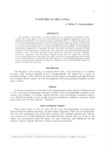Pastures in Sri Lanka
Tropical agriculture research series : proceedings of a symposium on tropical agriculture researches
| ISSN | 03889386 |
|---|---|
| 書誌レコードID(総合目録DB) | AA00870529 |

本文フルテキスト
tars18-_71-85.pdf2.5 MB
The Republic of Sri Lanka is a tropical island with low variations in temperature, heavy rainfall and a wide range of soils. The total production of roughage is insufficient to meet the nutritional requirements of the animal population numbering about 1.7 million. The major part of the feed comprises natural pastures and crop residues. The average size of farm with livestock is 1.2 hectares. Government policy is aimed at expanding the dairy industry by increasing the forage base and reducing the use of provender feed and nitrogenous fertilizer. Several programs and incentive schemes are in operation and since 1981 there has been an increase in forage production. Well-adapted grass varieties have been identified for growing in the different agroecological zones. The main cultivated forage species are Brachiaria, Panicum,/i>, Paspalum, Pennisetum, Stylosanthes and Desmodium. Legume shrubs and tree fodder like Gliricidia, Leucaena and Erythrina are widely used. The main constraints to forage production are the small size of holding, difficulty in persuading the small farmers to cultivate fodder, inadequate farmer contact and insufficient emphasis on forages by village level staff, and insufficient number of pasture scientists and technicians.
| 刊行年月日 | |
|---|---|
| 作成者 | A. Brian P. Jayawardana |
| 公開者 | Japan International Research Center for Agricultural Sciences |
| 巻 | 18 |
| 開始ページ | 71 |
| 終了ページ | 85 |
| 言語 | eng |
